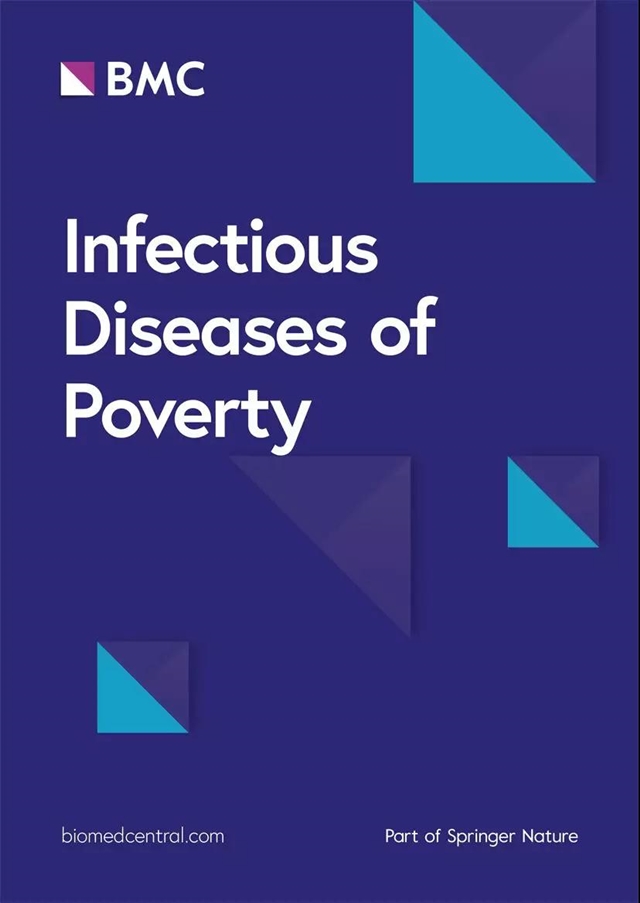Spatio-temporal dynamics of malaria in Rwanda between 2012 and 2022: a demography-specific analysis
IF 5.5
1区 医学
Q1 INFECTIOUS DISEASES
引用次数: 0
Abstract
Despite global efforts to reduce and eventually interrupt malaria transmission, the disease remains a pressing public health problem, especially in sub-Saharan Africa. This study presents a detailed spatio-temporal analysis of malaria transmission in Rwanda from 2012 to 2022. The main objective was to gain insights into the evolving patterns of malaria and to inform and tailor effective public health strategies. The study used yearly aggregated data of malaria cases from the Rwanda health management information system. We employed a multifaceted analytical approach, including descriptive statistics and spatio-temporal analysis across three demographic groups: children under the age of 5 years, and males and females above 5 years. Bayesian spatially explicit models and spatio scan statistics were utilised to examine geographic and temporal patterns of relative risks and to identify clusters of malaria transmission. We observed a significant increase in malaria cases from 2014 to 2018, peaking in 2016 for males and females aged above 5 years with counts of 98,645 and 116,627, respectively and in 2018 for under 5-year-old children with 84,440 cases with notable geographic disparities. Districts like Kamonyi (Southern Province), Ngoma, Kayonza and Bugesera (Eastern Province) exhibited high burdens, possibly influenced by factors such as climate, vector control practices, and cross-border dynamics. Bayesian spatially explicit modeling revealed elevated relative risks in numerous districts, underscoring the heterogeneity of malaria transmission in these districts, and thus contributing to an overall rising trend in malaria cases until 2018, followed by a subsequent decline. Our findings emphasize that the heterogeneity of malaria transmission is potentially driven by ecologic, socioeconomic, and behavioural factors. The study underscores the complexity of malaria transmission in Rwanda and calls for climate adaptive, gender-, age- and district-specific strategies in the national malaria control program. The emergence of both artemisinin and pyrethoids resistance and persistent high transmission in some districts necessitates continuous monitoring and innovative, data-driven approaches for effective and sustainable malaria control.2012 年至 2022 年卢旺达疟疾的时空动态:特定人口分析
尽管全球都在努力减少并最终阻断疟疾的传播,但该疾病仍然是一个紧迫的公共卫生问题,尤其是在撒哈拉以南非洲地区。本研究对卢旺达 2012 年至 2022 年的疟疾传播情况进行了详细的时空分析。主要目的是深入了解疟疾不断演变的模式,为制定有效的公共卫生战略提供依据。研究使用了卢旺达卫生管理信息系统中的疟疾病例年度汇总数据。我们采用了多方面的分析方法,包括描述性统计和三个人口群体的时空分析:5 岁以下儿童、5 岁以上男性和女性。我们利用贝叶斯空间明确模型和空间扫描统计来研究相对风险的地理和时间模式,并确定疟疾传播集群。我们观察到,从 2014 年到 2018 年,疟疾病例大幅增加,2016 年达到高峰,5 岁以上男性和女性病例数分别为 98,645 例和 116,627 例,2018 年 5 岁以下儿童病例数为 84,440 例,地域差异明显。卡莫尼(南部省)、恩戈马、卡永扎和布吉塞拉(东部省)等地区的病例数较高,可能受到气候、病媒控制措施和跨境动态等因素的影响。贝叶斯空间显式建模显示,许多地区的相对风险升高,凸显了这些地区疟疾传播的异质性,从而导致疟疾病例在 2018 年前总体呈上升趋势,随后有所下降。我们的研究结果强调,疟疾传播的异质性可能是由生态、社会经济和行为因素驱动的。这项研究强调了卢旺达疟疾传播的复杂性,并呼吁在国家疟疾控制计划中采取适应气候、针对不同性别、年龄和地区的策略。青蒿素和拟除虫菊酯抗药性的出现以及一些地区持续的高传播率要求我们必须持续监测并采用创新的数据驱动型方法,以实现有效、可持续的疟疾控制。
本文章由计算机程序翻译,如有差异,请以英文原文为准。
求助全文
约1分钟内获得全文
求助全文
来源期刊

Infectious Diseases of Poverty
Medicine-Public Health, Environmental and Occupational Health
CiteScore
16.70
自引率
1.20%
发文量
368
审稿时长
13 weeks
期刊介绍:
Infectious Diseases of Poverty is a peer-reviewed, open access journal that focuses on essential public health questions related to infectious diseases of poverty. It covers a wide range of topics and methods, including the biology of pathogens and vectors, diagnosis and detection, treatment and case management, epidemiology and modeling, zoonotic hosts and animal reservoirs, control strategies and implementation, new technologies, and their application.
The journal also explores the impact of transdisciplinary or multisectoral approaches on health systems, ecohealth, environmental management, and innovative technologies. It aims to provide a platform for the exchange of research and ideas that can contribute to the improvement of public health in resource-limited settings.
In summary, Infectious Diseases of Poverty aims to address the urgent challenges posed by infectious diseases in impoverished populations. By publishing high-quality research in various areas, the journal seeks to advance our understanding of these diseases and contribute to the development of effective strategies for prevention, diagnosis, and treatment.
 求助内容:
求助内容: 应助结果提醒方式:
应助结果提醒方式:


